Recent Articles
Popular Makes
Body Types
10 Reasons Why the 2017 Porsche 718 Boxster is Even Better than Last Year’s Model
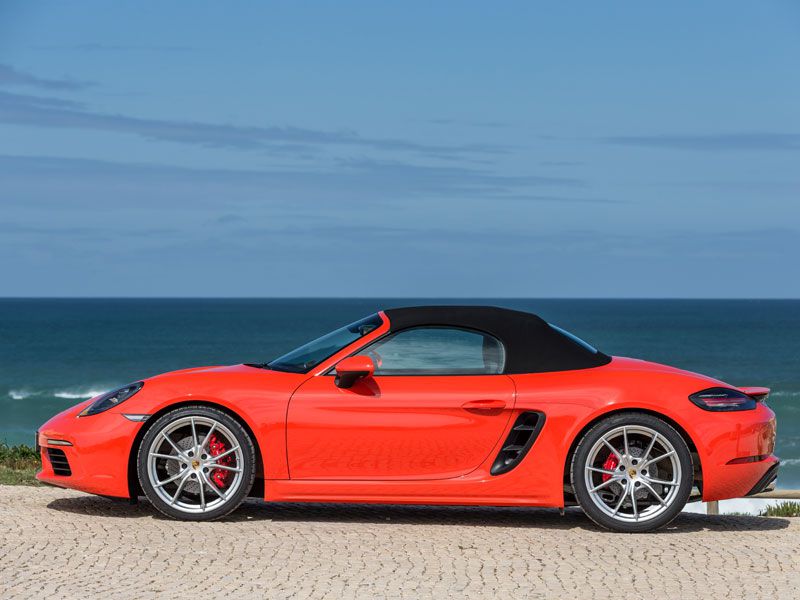
2017 Porsche 718 Boxster profile red ・ Photo by Porsche
Porsche recently introduced a refreshed third-generation version of its popular mid-engine Boxster sports car for 2017. And, for the first time since its launch in 2008, the two-seater loses its six-cylinder engines as more stringent fuel economy and emissions regulations force the German automaker to fit it with a turbocharged four-cylinder. Reducing the size of the engine doesn’t sound like an improvement — unless your rear decklid has “PORSCHE” emblazoned on it. Read more to learn why the redesigned, refreshed, and updated 2017 Porsche 718 Boxster is even better than last year’s six-cylinder model.
1. The 718 Boxster has a more inspirational name than its predecessor.
Porsche uses an internal project number for each of its vehicles — the number typically isn’t marketed to the consumer. The first-generation Boxster, which arrived in 1997, was called the Type 986. It was followed by the Type 987 in 2004, and the Type 981 in 2012. Breaking tradition, Porsche chose to emblazon the updated 2017 model with its new project number: Type 718. The Type 718 designation pays homage to the famed Porsche 718 sports car that was offered for sale between 1957 and 1962. Coincidentally, that lightweight vehicle was offered with a small four-cylinder engine, which is fitting, as the new 718 Boxster arrives with the same.
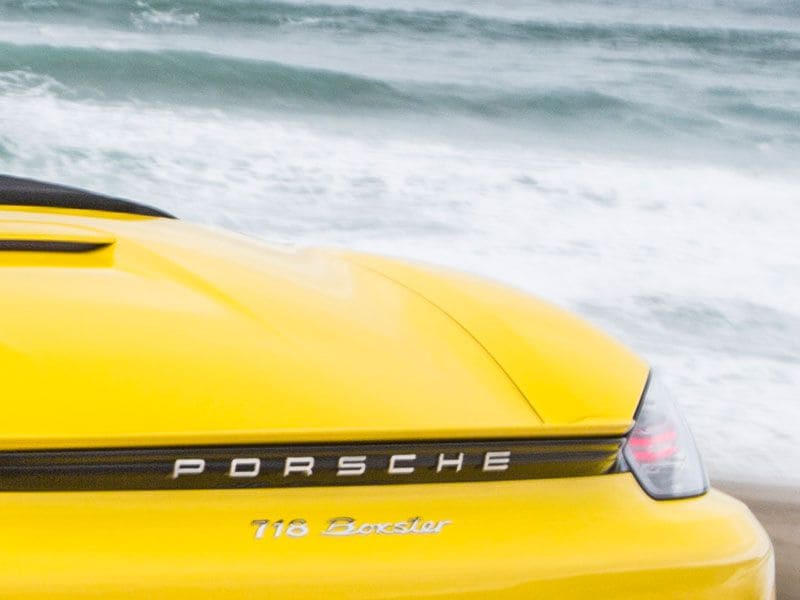
Photo by Porsche Cars North America
2. The 2017 Porsche 718 Boxster has a better engine than its predecessor.
The Boxster has always boasted a horizontally-opposed flat-6 engine, which is the same type of powerplant that is in Porsche’s celebrated 911 Carrera models. Last year’s Boxster models were fitted with naturally aspirated 2.7-liter and 3.4-liter six-cylinder models, but the 2017 model year welcomes two new horizontally-opposed flat-4 engines, both turbocharged, displacing the 2.0-liter and the 2.5-liter engines. These engines are more powerful (300 horsepower and 350 horsepower, respectively) and more technically advanced that the outgoing engines, despite being significantly smaller. Note: Porsche isn’t the only automaker switching to turbocharging to deliver more power from a smaller package, as nearly every automaker is offering a forced induction engine this year.
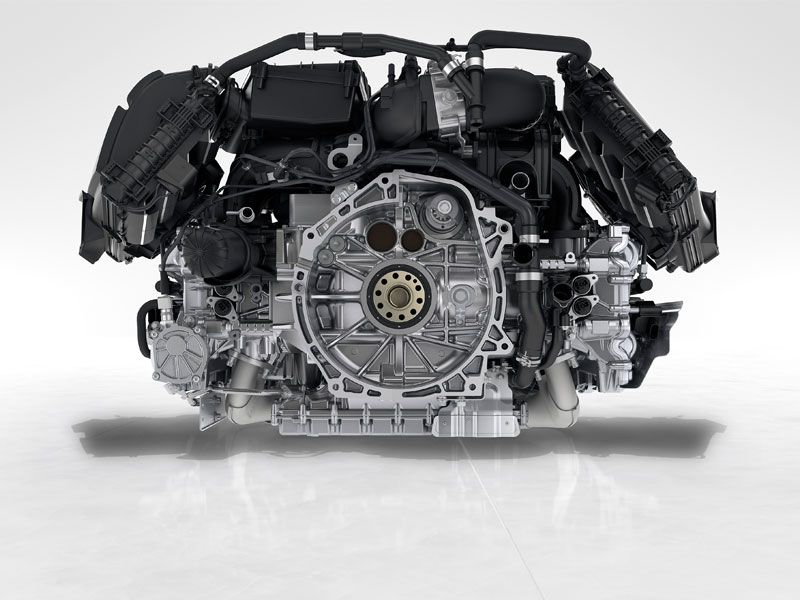
Photo by Porsche Cars North America
3. The 2017 Porsche 718 Boxster is more fuel efficient than its predecessor.
People don’t buy sports cars to “hypermile” (a driving technique that maximizes fuel economy), but they do want a vehicle that is reasonably frugal with gasoline. While nobody complained that last year’s Porsche Boxster was inefficient, the German automaker went back to the drawing board and released two all-new turbocharged four-cylinder engines.
The new engines are not only more powerful than their predecessors, but Porsche says they should deliver upwards of a 13 percent improvement in fuel economy. This is great news as it not only saves money at the pump, but the engines release fewer emissions, which means they are friendlier to the environment, too.
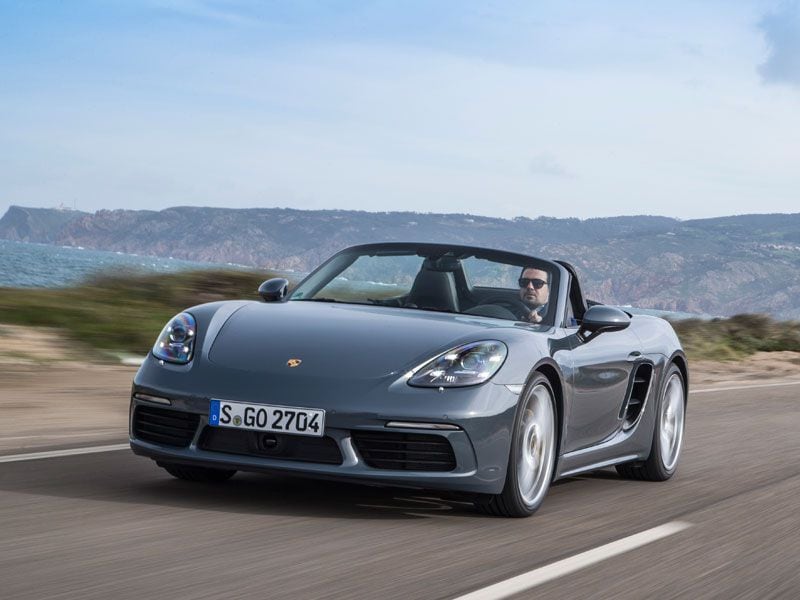
Photo by Porsche
4. The 2017 Porsche 718 Boxster is quicker than its predecessor.
Weight is everything with regards to a sports car — a vehicle with low mass is much easier to accelerate to speed (and it handles better, too). With that in mind, Porsche has meticulously kept the 718 Boxster on a very strict diet. According to the automaker, the standard 718 Boxster with a manual gearbox weighs just 2,943 pounds. The heaviest, a Boxster S with PDK, weighs in at 3,053 pounds. Combined with the powerful turbocharged engines, both vehicles accelerate effortlessly. According to Porsche’s own testing, the standard vehicle will accomplish the benchmark 0-60 mph sprint in 4.9 seconds, while the Boxster S with PDK and the optional Sport Chrono Package, will finish the same task in just 4.0 seconds flat. Those numbers are better than the outgoing Boxster models, and will make the acceleration of your family-hauling minivan seem absolutely lethargic.
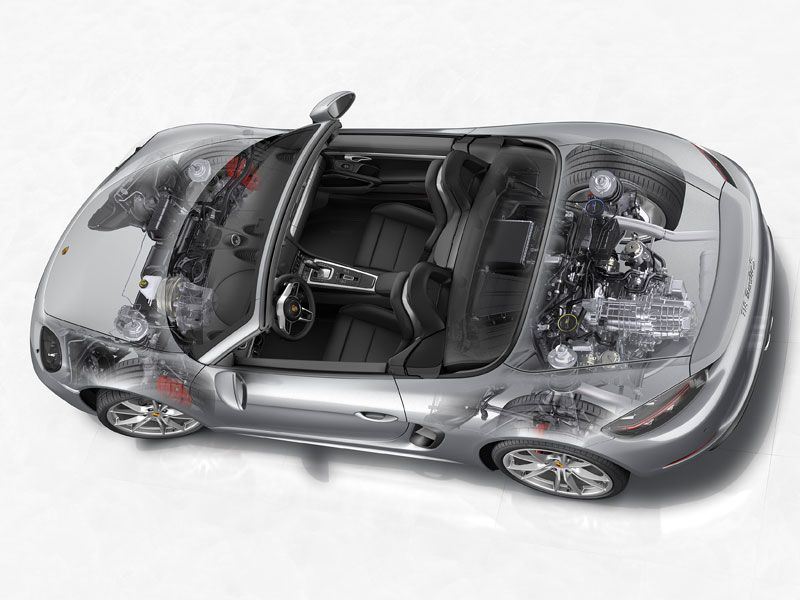
Photo by Porsche Cars North America
5. The 2017 Porsche 718 Boxster is even faster than its predecessor.
Germany is famed for its unlimited speed Autobahn. It’s a countrywide network of specially engineered roads designed for high velocity traffic. The Autobahn is the equivalent of Disneyland for enthusiasts, who drive their high performance vehicles as fast as they can go.
The standard 2017 Boxster with a manual gearbox is the slowest in the lineup, yet it is capable of hitting 171 mph on the Autobahn, which is the takeoff speed for a 747 Jumbo Jet! If that isn’t fast enough for you, upgrade to the Boxster S with PDK and the optional Sport Chrono Package and it won’t run out of steam until it hits a blistering top speed of 177 mph.
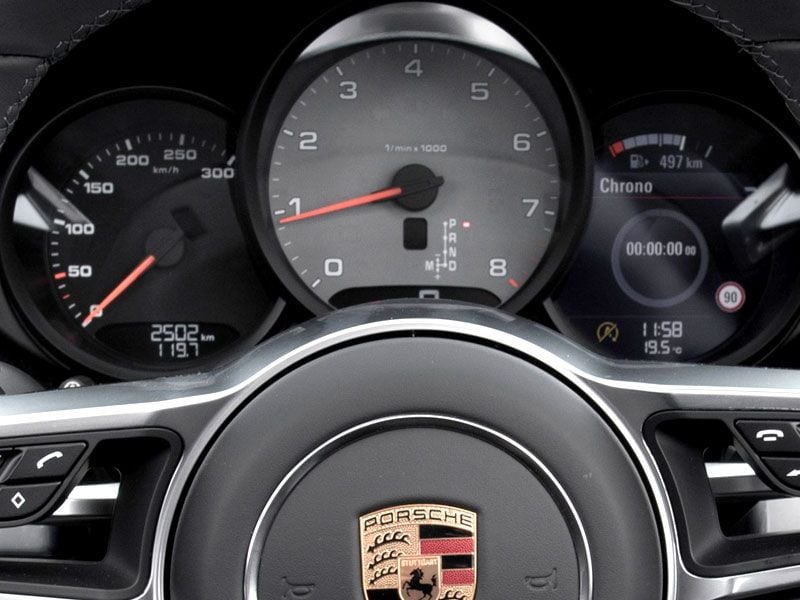
Photo by Porsche Cars North America
6. The 2017 Porsche 718 Boxster sounds more aggressive than its predecessor.
Anyone who believes that a four-cylinder engine doesn’t emit a pleasant soundtrack hasn’t listened to the Porsche 718 Boxster. The automaker painstakingly tuned the exhaust system to be throaty and aggressive, which shows off the two-seater’s sporty character.
The standard 718 Boxster is fitted with a single oval tailpipe at the rear, which is finished in brushed stainless steel. The upgraded 718 Boxster S has two round tailpipes, also finished in brushed stainless steel, that are centrally located. If the standard exhaust pipes aren’t boisterous enough, an optional Sport Exhaust system will definitely turn up the volume a few notches.
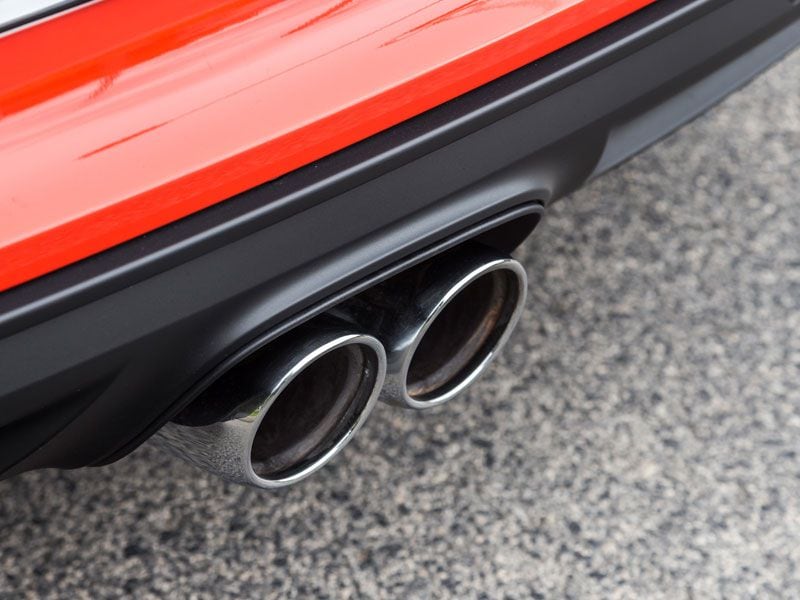
Photo by Porsche Cars North America
7. The 2017 Porsche 718 Boxster is more visually distinctive than its predecessor.
An all-new engine is a significant enough for a model refresh, but Porsche took things a bit further to justify its all-new 718 nomenclature — the automaker re-sculpted nearly all of its body panels. Every single body panel, except for the rear trunk, is new — the intention is to give it a stronger presence on the road. The front features larger intakes, which appear visually more aggressive and increase the amount of cool air feeding the radiators. The rear has been fitted with a new accent strip with integrated Porsche badging. Redesigned lights, front and rear, round out its fresh new appearance.
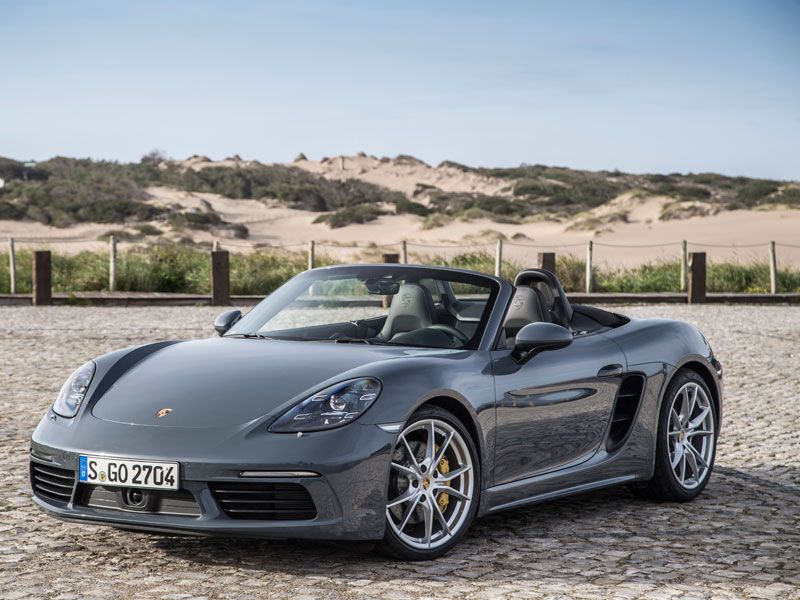
Photo by Porsche
8. The 2017 Porsche 718 Boxster handles better than its predecessor.
Replacing a six-cylinder engine with a four-cylinder engine significantly alters the mass of a vehicle. This meant that Porsche’s engineers had to completely recalibrate the 718 Boxster’s suspension to accommodate the change. The team chose to improve the suspension at the same time, beefing up the rear subframe and increasing the diameter of the shock absorbers. Lastly, they increased the size of the rear wheels. Stock fitment are 18-inches in diameter on the 718 Boxster (wrapped in 235/35-18 and 265/40-18 tires), while the Boxster S rides on wheels that are 19-inches in diameter (wrapped in 235/40-19 and 265/40-19 tires). Even though the stock wheels are extremely low profile, most owners upgrade to even more spectacular 20-inch alloys, which handle even better.
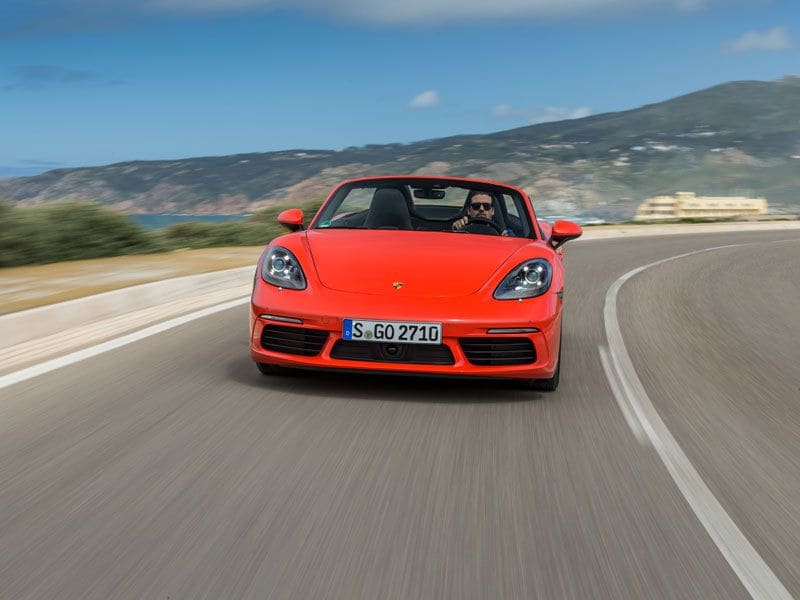
Photo by Porsche
9. The 2017 Porsche 718 Boxster offers better technology than its predecessor.
The new 718 Boxster isn’t just a story about engines, suspension, and body style — Porsche also upgraded its technology. The aforementioned upgrades are complemented by innovation within the passenger cabin. A redesigned instrument panel features the latest generation of Porsche Communication Management (PCM), complete with a touchscreen. The system includes an iPod-capable USB port on the center console, Apple CarPlay including “Siri” voice control, and Porsche Car Connect. An optional Navigation Module with voice control displays maps with 3D representations in select regions.
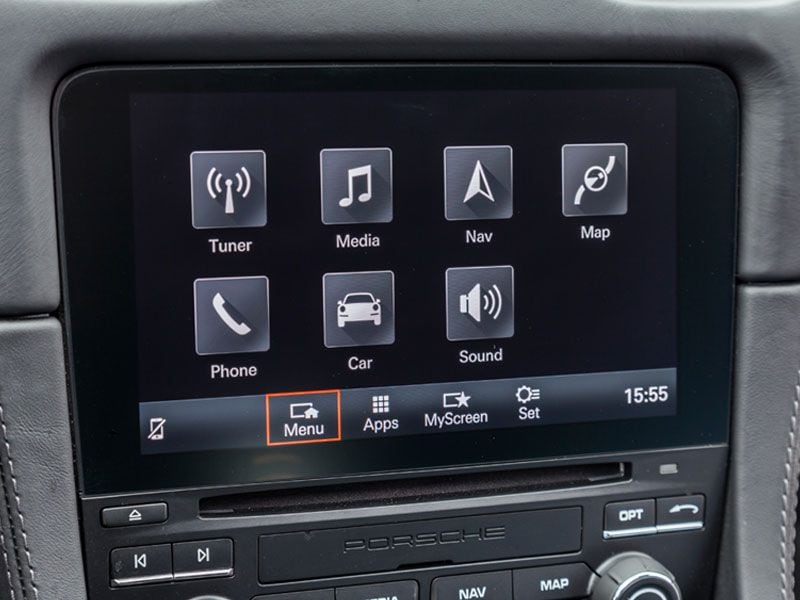
Photo by Porsche Cars North America
10. The 2017 Porsche 718 Boxster has a more youthful demeanor than its predecessor.
Without question, the 718 Boxster’s new four-cylinder isn’t as smooth as the outgoing six-cylinder, but it is every bit as zealous and free-spinning as its predecessors. Its redline is a stratospheric 7,500 rpm, which Porsche is very proud of, and there is very little power loss as it moves up to its maximum engine speed.
The new engine has plenty of character. So much, in fact, that we were left convinced that the new 2017 Porsche 718 Boxster was peppier, more energetic, and more full of life than last year’s model. As crazy as this sounds, after an enjoyable day behind its thick steering wheel, we were convinced that it felt decidedly more youthful.
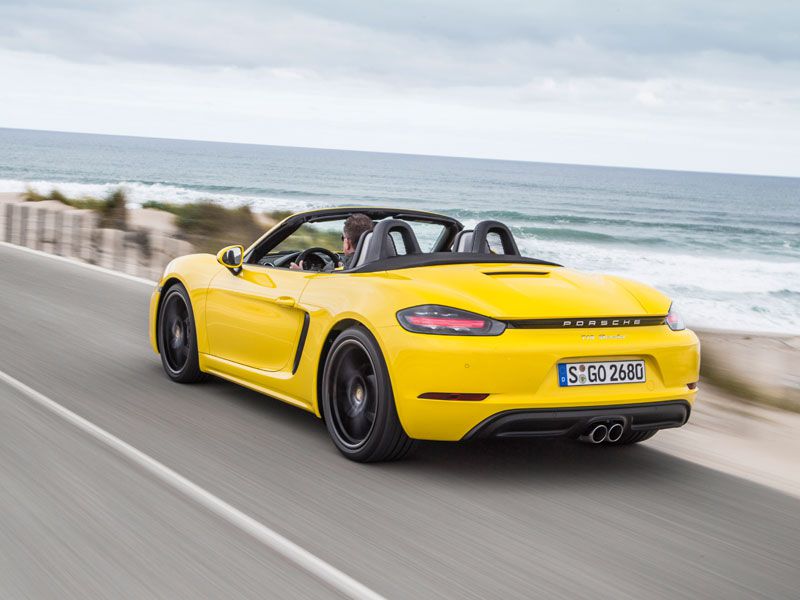
Photo by Porsche